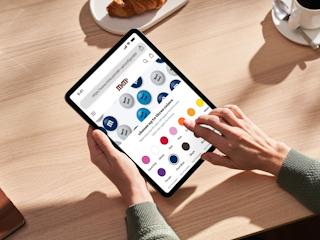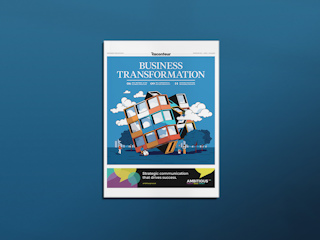This is the second article in our Factory Tour series. You can find the first article here.
Introduction
As commerce becomes more complicated with the rise of digital wallets, proliferation of payment methods, data privacy, and the need for brands to own their customers, the data pool is greater than ever. “In the US in 2020, 57% of B2C e-commerce sales flowed through marketplaces.” Forrester. Taking back the customer’s relationship requires a modern approach to the commerce experience. Understanding the goals for the customer experience is a top priority, just like empowering business managers to think like digital experience fanatics because they can execute or pivot to meet the ever-changing demand in the digital commerce landscape.
Migrating to a newer technology can often seem exciting and a no-brainer to future proof the business but before jumping into a composable digital transformation, leaders should consider the current technical landscape, future business needs and goals, and overall impact to all the departments within the organization. For organizations whose digital presence is built on a monolithic solution, an in-depth technical analysis of the legacy technologies is warranted – composable isn’t right for everyone. Composable commerce is inherently a highly customized, flexible approach, where unlike traditional stacks, it is possible to leverage it as a total transformation or to improve key portions of the digital journey.
So what approach is right for your organization? There are many things that should be taken into consideration – we will cover four of those critical elements. The first step is to evaluate BOTH the business and the technical needs based on the targeted goals of the organization. Once the digital north star is developed, a review of the current technical landscape and a corresponding gap analysis must be completed before selecting a path forward. How to implement the new solutions can be just as critical as the solution itself as it will impact the current day to day as well as future scalability. The goals should be to see a positive return on investment as quickly as possible and establish the foundation for a positive future TCO (total cost of ownership). The last consideration is related to the people within the organization. A composable digital transformation will inevitably require enabling the business user, on multiple levels (organization, ways of working, etc). It is critical that these be considered as well as part of the long-term technical strategy.
Identifying Business Needs & Goals
The concept of composable commerce tends to be more easily understood and embraced by the technical teams. Business users, especially in fast paced commerce environments, typically do not understand what headless, composable or a hybrid is, or how it would benefit them and their long-term goals. When evaluating solutions for a digital transformation, the teams must come together and define a north star that will guide in prioritization, alignment, and success metrics.
For the business, change management and overall project visibility are key. There are many more moving parts in composable commerce, which therefore require more planning and thought-out change. Some aspects to explore with the business users include:
-
Reporting, Analytics, Insights – As there are more data pools, you will need to consider consistent reporting, analytics and insights and link these to your data lake. You may also need to implement some of the reports, that traditionally were offered out of the box with suite solutions, as some reports may need data from different architectural components.
-
Business Rules – Suites are opiniated and come with implicit business rules that you can re-use. With composable, the components are unopinionated and therefore these rules need to be explicitly defined, configured, and maintained. It becomes a solution moulded to your business.
-
People with Experience – There are very few people in the market with the composable commerce knowledge and skills, due to the relatively young age of the technologies. It is therefore best to elaborate a plan to enable the in-house engineers and business users to ramp up their skillset as early as possible in the lifecycle of the program. The development of the skillset can take multiple forms: online training, courses offered by the vendor, or a custom learning session from the selected solution integrator.
-
Additional Operational Cost - Some features that you need to deliver, come out of the box with suites. Composable ‘best of breed’s do not have all these features built-in, but it does allow you to extend the tools to enable features. This flexibility allows for a fully customized implementation, that completely aligns with the organization’s needs. In this case, the features need to be designed, built, deployed, and maintained, adding an operational cost. However, this additional cost is offset by the reduction of operation costs on server and systems management from a suite solution.
-
People and Processes – Migrating towards a composable landscape will inevitably impact a wide range of users. Ways of working, internal and external processes and the adoption of new user interfaces are only a few examples, and it is therefore important that the enablement, training, and transition of these users be carefully thought out and planned for.
The best way to deep dive into current pain points and future objectives is through a series of workshops. The main outcome of those workshops is to understand the current functional and technical state of the legacy platform, and how those translate to the targeted solution. This critical foundational activity will touch different areas of focus: customer accounts, products, order support, finance, customer journey, fulfilment, content, integration layer, underlying services (ERP), and so on.
Activities
/ Understand capabilities and functionality of current platform (focus areas)
/ Explore background, Key business processes
/ Explore supporting functionalities (e.g., Reporting, Analytics, Auditing etc.)
/ Identify current/future Systems of Record
/ Differences between locales - (for those in scope of Discovery)
/ Identify for high level requirements - what can be achieved?
/ Identifying out-of-the-box functionality (standard feature which can be configured) and 3rd party services to be integrated (e.g., CMS, DXP, PIM, etc.)
/ Identifying areas that will need custom solutions






